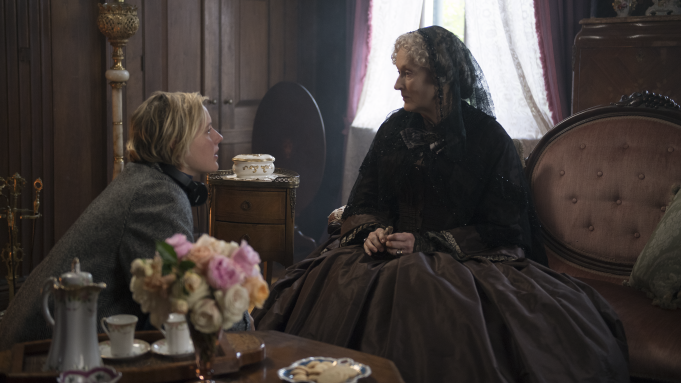
#LITTLE WOMEN TIME PERIOD FREE#
Alcott imagined the March sisters as independent-minded young ladies, despite their lack of wealth, free to pursue their own happiness in a world where women of their station often relied on either their fiancés’ fortunes or a generous inheritance to provide for their futures.Įarly in her own adaptation, Gerwig zeroes in on the practical function matrimony plays in the story - calculated more for audiences than for the characters’ benefit - putting the explanation into the mouth of Jo’s editor, Mr. As in “Lady Bird,” she and editor Nick Houy keep things moving at a quick clip, though skipping around in time is a mistake, making a plot Gerwig must have considered too episodic, or else too melodramatic for her taste, even more so on both counts - as evidenced by the way that, in hindsight, it’s the emotional episodes we return to in our memories, rather than the overall arc of what happened to the March family.Ĭall me corny, but “Little Women” hooks me every time, in part because Alcott created such lively characters but also on account of the way she approached the institution of marriage. Rather than telling the story straight through, the way Alcott and her other adapters have, Gerwig opts to shuffle the scenes, telling “Little Women” almost entirely out of order, except for the Christmas letter from Father that opens the tale and the kiss that ends it. “Little Women” is just the opposite: a wholesome, kindhearted tale of generosity and good manners, where malicious acts occasionally occur (as when Amy destroys Jo’s novel) but not nearly as often as acts of charity (like the time the March girls offer their Christmas dinner to a starving family down the road).

Yes, the book was written at the pressure of Alcott’s publisher for young female readers, but Gerwig’s version doesn’t talk down in the slightest and may in fact play better with adults, especially those who find mainstream movies too salacious and immoral.

March (Bob Odenkirk), who’s gone off to war and left his wife and kids to fend for themselves, fondly refers to his daughters - is that it’s not necessarily for little audiences. The irony of “Little Women” - in light of the title, which is how Mr. Over the years, that role has gone to actors ranging from a pre-Batman Christian Bale (who first asked Ryder’s Jo to dance) to future “Rat Packer” Peter Lawford (in Mervyn LeRoy’s 1949 version) to Jonah Hauer-King (just announced as Prince Eric in Disney’s “The Little Mermaid” reboot), but Chalamet feels the Lauriest of Lauries: Doe-eyed and floppy-haired, alternately indolent and hyper-attentive, and so faithful as to seem almost fraternal, he plays the Marches’ devoted admirer as if channeling a young Daniel Day-Lewis - a connection younger audiences won’t make but older ones are sure to appreciate. Now, director Greta Gerwig has identified that it’s as good a time as any to dust off Alcott’s novel for a fresh interpretation while paying no mind to the fact that both Masterpiece Theatre and actor Clare Niederpruem saw fit to do the same in the two years since “Lady Bird’s” release.Īs one might hope, Gerwig’s interpretation does right by the material, sticking to the original period and setting and assembling a dream cast to play the March siblings - Emma Watson as eldest sister Meg, the teacher Saoirse Ronan as Jo, the writer and Alcott’s clear counterpart Eliza Scanlen as Beth, the musical one and Florence Pugh as Amy, impulsive and the artist of the family - and, in Timothée Chalamet, the perfect actor to embody the book’s curly-headed boy next door, Laurie. It’s been 25 years since Winona Ryder played Jo March, and 61 more since Katharine Hepburn tackled the role for George Cukor (the previous screen versions had been silent).

Young people seem far less interested in watching films made before their birth, and for that reason, there will always be good reason to remake “Little Women.” After all, every generation deserves its own version. In that span, the novel has never gone out of print, and its popularity seems unlikely to fade in the centuries to come. That’s the timeless quality of certain literary classics, and Louisa May Alcott’s Civil War tale of four close-knit sisters continues to delight, feeling every bit as alive today as it must have 150 years ago.

If there’s one thing I know about real-world little women, it’s that they will read “Little Women” no matter the era.


 0 kommentar(er)
0 kommentar(er)
